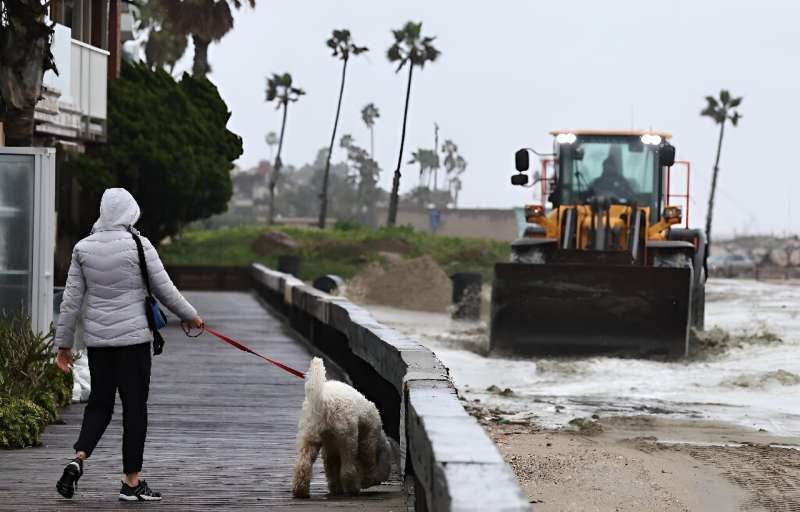This article has been reviewed according to Science X's editorial process and policies. Editors have highlighted the following attributes while ensuring the content's credibility:
fact-checked
peer-reviewed publication
reputable news agency
proofread
Sinking US cities more exposed to rising seas: Study

Sea level rise could hit major US cities like New Orleans and San Francisco harder than expected by mid-century because coastal land is sinking, researchers said Wednesday, warning current flood defenses leave people and property at risk.
Global warming is melting ice sheets and glaciers and raising ocean water levels across the world, with predictions that the United States will see some of the fastest increases, threatening coastal regions that are home to some 30 percent of the country's population.
Sea level rise of around 30 centimeters (nearly a foot) is already projected to affect US coasts by 2050, significantly increasing the risks of destructive climate impacts like storm surges.
But that threat is even greater when you take into account coastal subsidence, researchers found, warning that tens of thousands of people—and potentially billions of dollars of property—could be left exposed in 32 cities along the Atlantic, Pacific, and Gulf coasts.
Poorer and minority communities are at greatest risk, according to the study published in the journal Nature.
That "really multiplies the potential impact to those areas and their abilities to recover from significant flooding," lead author Leonard Ohenhen, of Virginia Tech, told AFP.
Ohenhen said subsidence, which can occur naturally and because of human actions like groundwater extraction and drainage, has been underestimated in computer modeling of flooding.
That has left more people at risk, according to the study.
Researchers found that even with current coastal defense infrastructure, subsidence and sea level rise could expose more than 1,300 square kilometers (around 500 square miles) of additional land to flooding over the next three decades.
This could threaten between 55,000 to 273,000 people and up to 171,000 properties.
Under the worst case scenario, one in every 50 people along the US coast could be exposed to a flood threat—along with hundreds of thousands of properties, with a total estimated value of $32 billion to $109 billion.
To slow the rate of subsidence, researchers recommended reducing groundwater extraction, regulating industrial activities and reducing emissions to reduce long-term climate risks.
Sea walls, levees and barriers offer flood protection, while nature-based solutions like restoring marshes and mangroves can also help.
"Ecosystems act as natural buffers against storm surges and help in sediment accumulation, which can mitigate the effects of land subsidence," said Ohenhen.
More information: Leonard O. Ohenhen et al, Disappearing cities on US coasts, Nature (2024). DOI: 10.1038/s41586-024-07038-3
Journal information: Nature
© 2024 AFP





















